2019 All-America City Finalist – Mission, TX
Application Summary for the All-America City Awards:
A town at the southern tip of Texas, Mission has a little over 83,000 residents, 88% of which are Latino.
The town prioritizes civic engagement, partly through the establishment of an All Inclusive Committee, which oversees city efforts regarding inclusivity in decision-making. Some of the ways in which residents get involved in community affairs include an annual Wellness Ride cycling event, stocking the city’s food pantry, and Mission Pawsible, a foster care program that helps rescue animals and host them for adoption.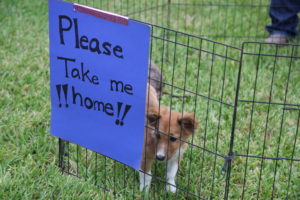
Three project examples showing how this community leverages civic engagement, collaboration, inclusiveness and innovation to successfully address local issues:
1.) Health Through Tennis
With more than 25% of the city’s population living in poverty, many residents have expressed concerns to the city about obesity, particularly among Latino and low-income residents. In discussions about the topic, the community decided to focus solutions regarding increasing exercise on building a tennis program.
The city contacted the United States Tennis Federation, which helped secure a $500,000 grant from a local foundation, which was later supplemented by a half-million dollar contribution from Texas Parks and Wildlife and another half-million dollars from the city. The complex is currently under construction and will be completed within a few months.
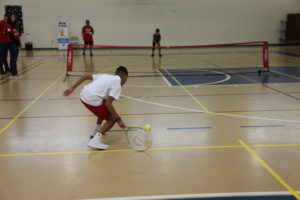 Mission community members and businesses have been quite involved with the tennis program, including helping to create a tennis equipment area where residents can borrow gear for free. Mission has also begun to partner with a nonprofit organization that helps provide tennis tournaments for blind children and adults. In 2015, the city hosted its first national blind tennis tournament where athletes from both Mexico and the USA participated. The city is anxious to host larger tournaments for the blind community once the new tennis complex is complete.
Mission community members and businesses have been quite involved with the tennis program, including helping to create a tennis equipment area where residents can borrow gear for free. Mission has also begun to partner with a nonprofit organization that helps provide tennis tournaments for blind children and adults. In 2015, the city hosted its first national blind tennis tournament where athletes from both Mexico and the USA participated. The city is anxious to host larger tournaments for the blind community once the new tennis complex is complete.
2.) Mission Economic Empowerment Project
To foster economic development, the city has engaged in several projects to help entrepreneurs and small business. One is the Ruby Red Venture competitive grant program, which is a $100,000 awards program that gives grants and technical assistance to entrepreneurs through a competitive application process each year and has been very successful at helping businesses get started.
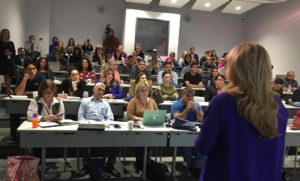 A second program to promote economic development is Code the Town, a training program created to teach computer programming skills to business startups. Many local residents, entrepreneurs, and small businesspeople have now gone through the program, which is helping them to market themselves in the high technology sector.
A second program to promote economic development is Code the Town, a training program created to teach computer programming skills to business startups. Many local residents, entrepreneurs, and small businesspeople have now gone through the program, which is helping them to market themselves in the high technology sector.
A third program is Career Readiness and Empowerment of Women (CREW), a multidisciplinary internship program started in 2017 to help 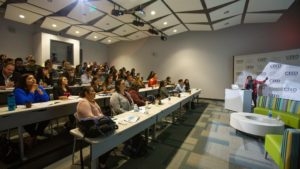 young women enter the workforce, particularly in high technology and STEAM-based careers. Fifteen young women from a local high school and STEAM academy were signed up for the first class based on their academic achievement and other qualities. Their internships include segments for career lab, mentorship, social innovation, and coding.
young women enter the workforce, particularly in high technology and STEAM-based careers. Fifteen young women from a local high school and STEAM academy were signed up for the first class based on their academic achievement and other qualities. Their internships include segments for career lab, mentorship, social innovation, and coding.
3.) Mission Services for All Project
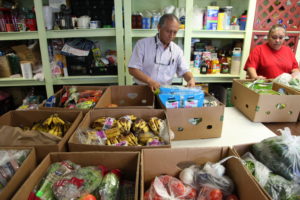 With so many people living in poverty, the community has engaged in a number of services to help those in need. One of those is the Mission Food Pantry, which has been in operation for over 30 years. When the pantry needed a new home, the city and community found a new, larger location. When residents identified other needs beyond food, the pantry transitioned to a multi-service provider, renaming itself the Mission Food and Service Center.
With so many people living in poverty, the community has engaged in a number of services to help those in need. One of those is the Mission Food Pantry, which has been in operation for over 30 years. When the pantry needed a new home, the city and community found a new, larger location. When residents identified other needs beyond food, the pantry transitioned to a multi-service provider, renaming itself the Mission Food and Service Center.
The new center provides not only food and other daily supplies for the needy, but also services, like help with utility bills, veterans services, and other activities. Along with the move and expanded location, the service center extended its hours to be open five days/week.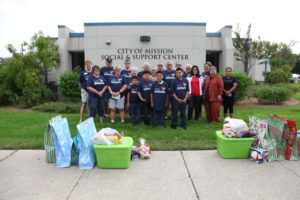
The Food and Service Center has also been of good use during specific times of need, like during the federal government shutdown, when many families of federal employees were able to take advantage of the center’s services. One of the new features of the center is a “Blessing Box,” a container accessible from the outside in which people can leave donation items any time of day. The Blessing Box has been so successful that it’s being replicated in other parts of the city.
Some Related Posts
Thank You to Our Key Partners



